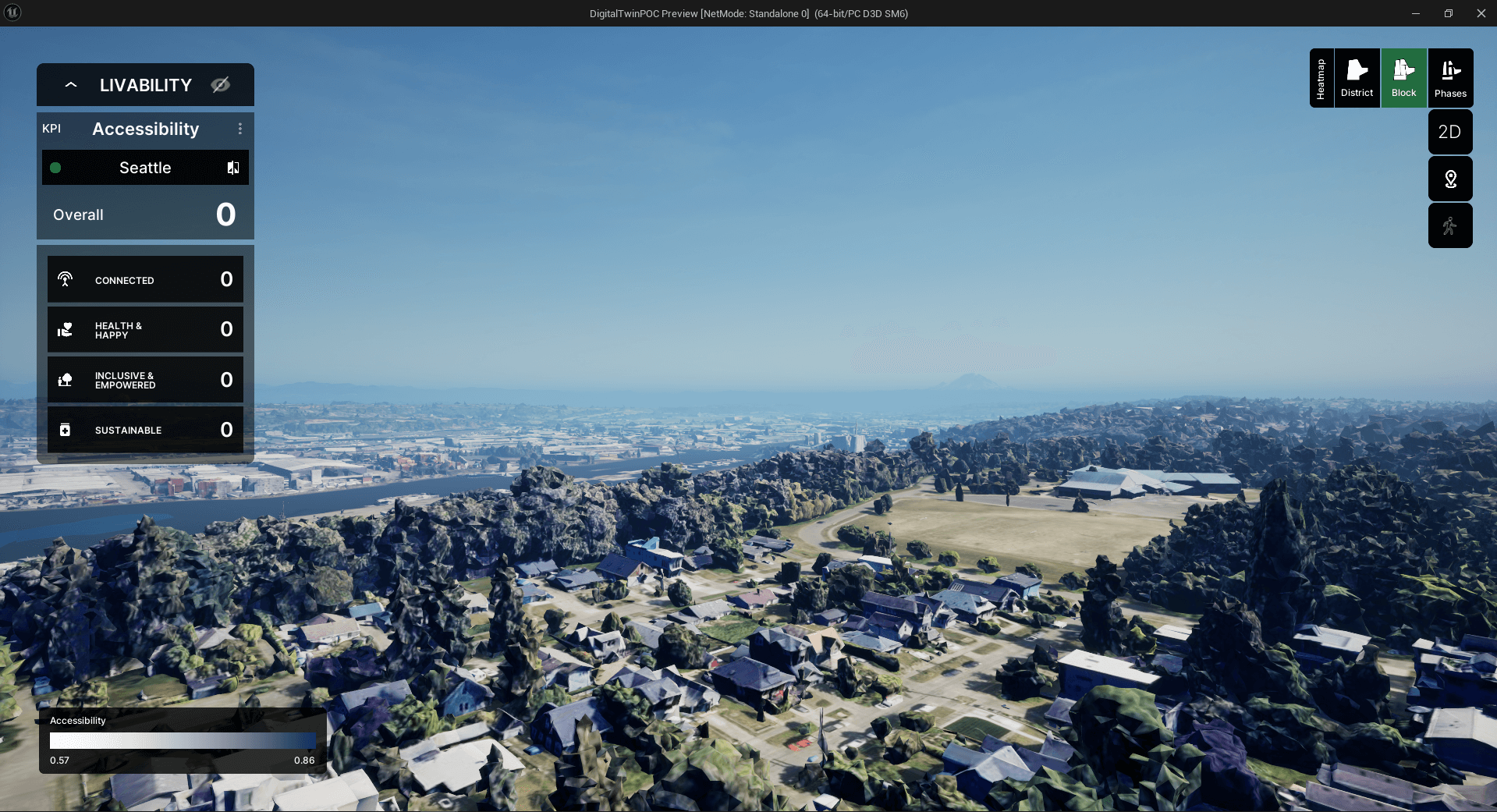
This case study explores the development of a digital twin for Seattle, utilizing Unreal Engine, Cesium, 3D Google Maps, and various open data sources. The digital twin is an immersive 3D visualization platform, overlaying livability data as a heat map layer. Despite data integration, performance optimization, and user interface design challenges, the digital twin provides a powerful tool for data-driven urban planning and development decision-making.
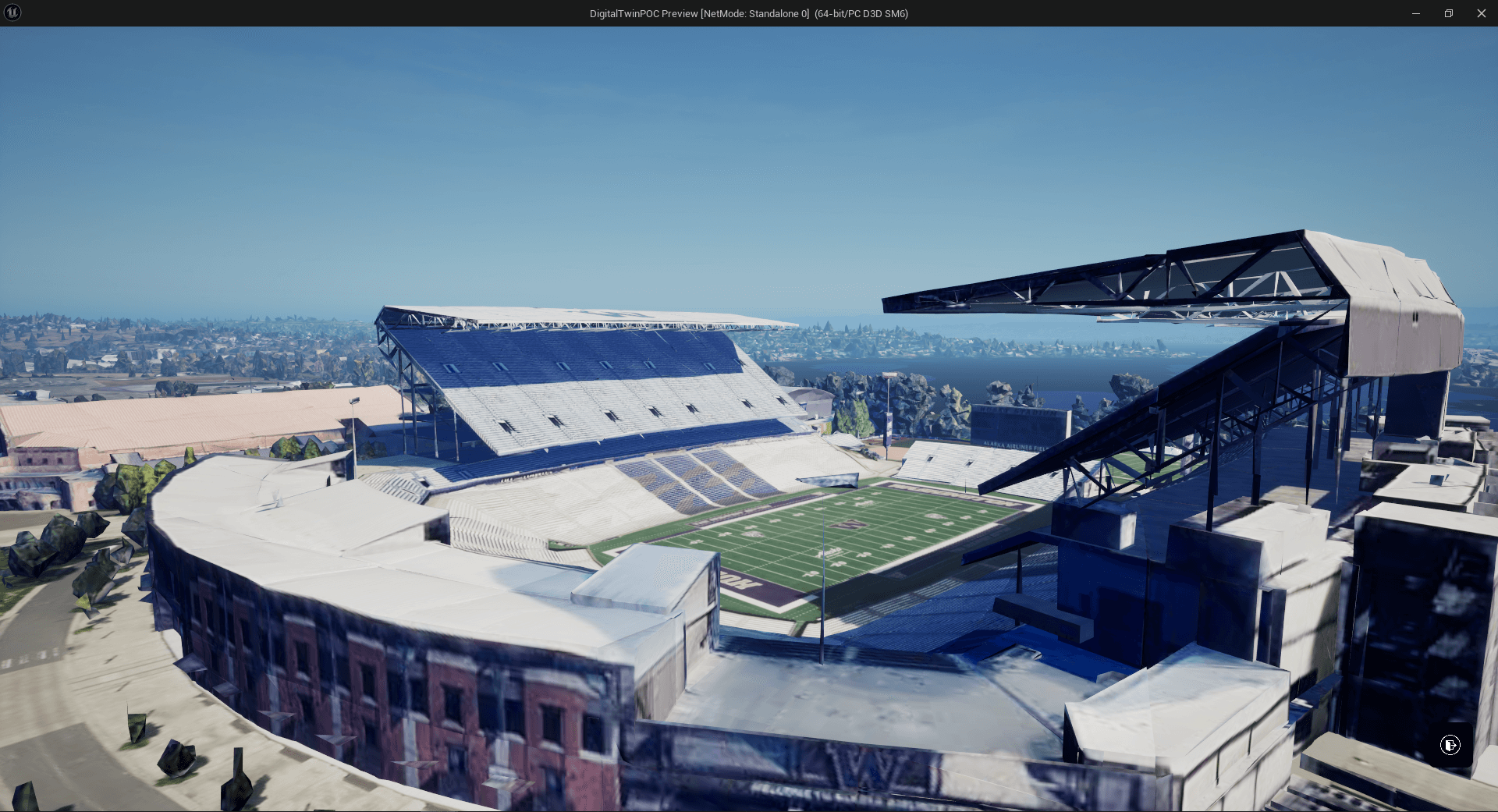
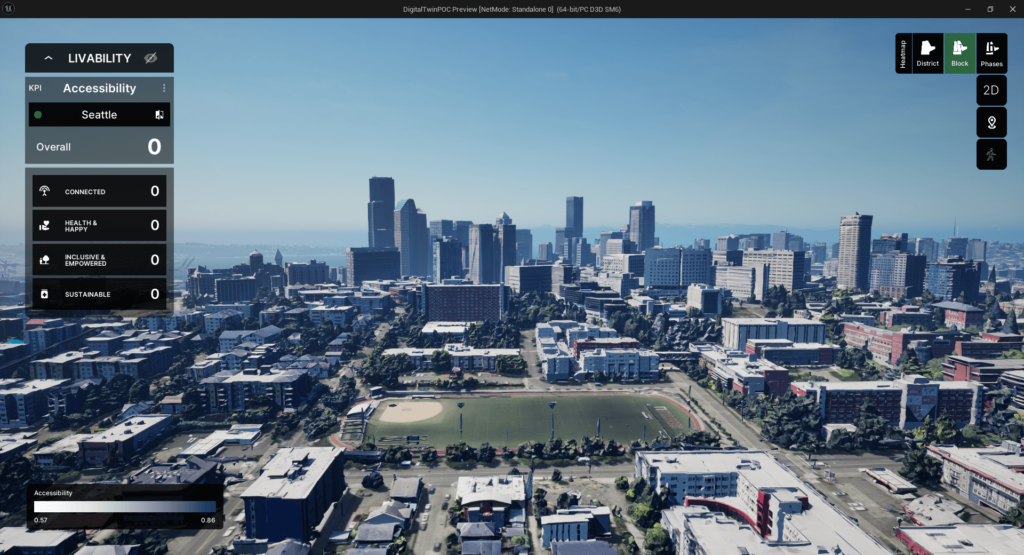
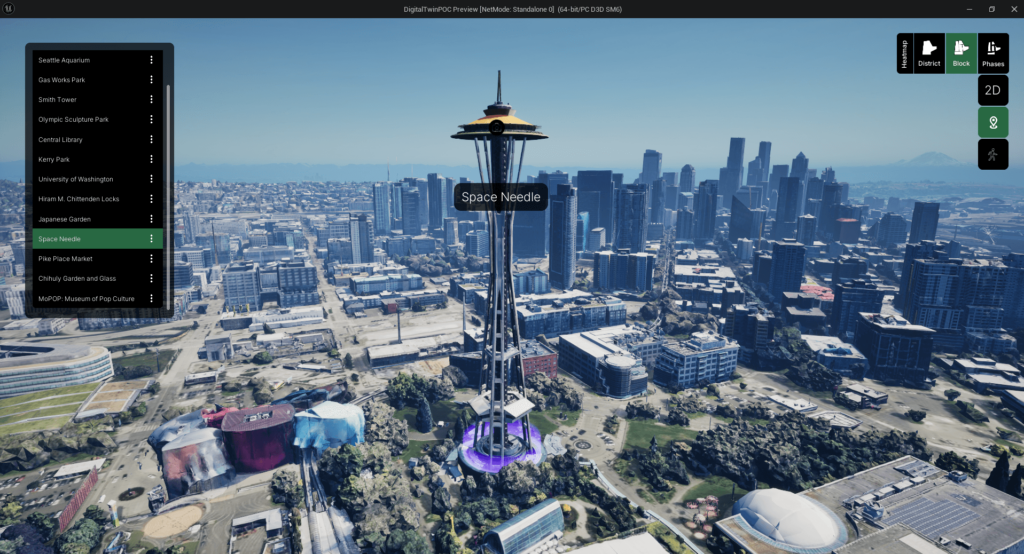
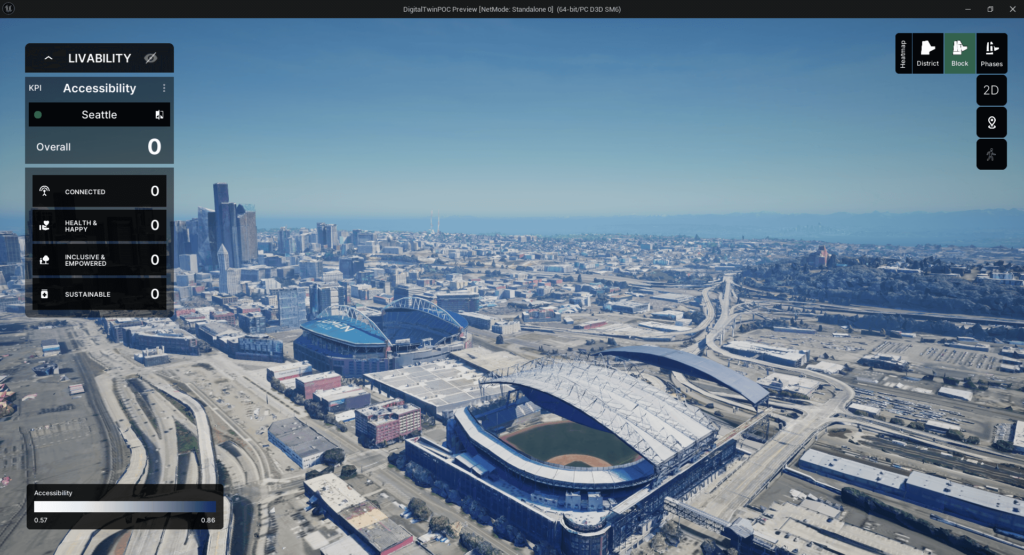
Outcomes & Results:
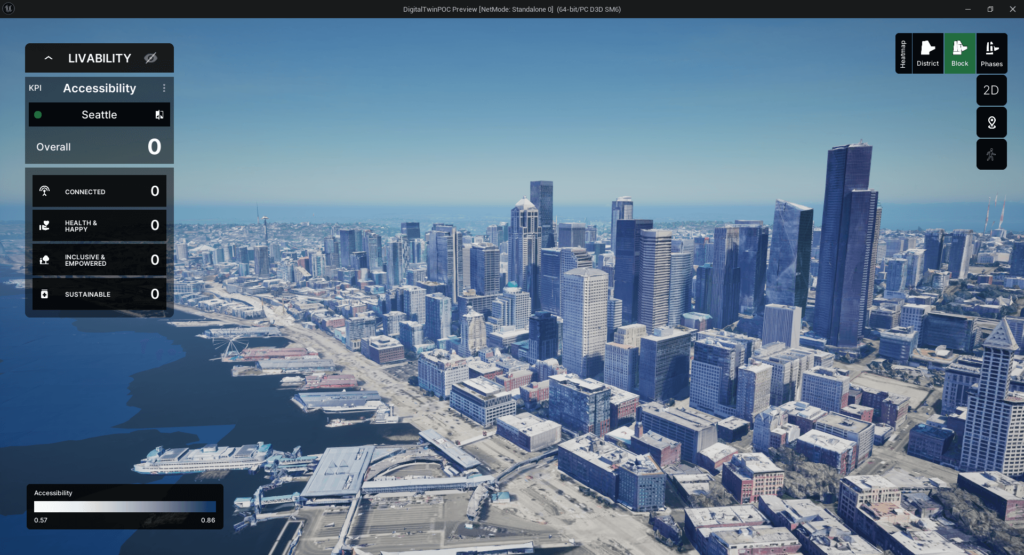
The Seattle digital twin project has successfully delivered an immersive and interactive 3D visualization platform, integrating urban data layers and leveraging cutting-edge technologies such as Unreal Engine, Cesium, and 3D Google Maps. Despite data integration, performance optimization, and user interface design challenges, the digital twin provides a valuable resource for urban planners, designers, and stakeholders. By enabling comprehensive analysis and visualization of urban data, the digital twin empowers data-driven decision-making processes, ultimately contributing to more informed and sustainable urban planning and development strategies for Seattle.
TILTLABS is a product realization company that operates mainly Metaverse, XR & Mobility, Virtual Production, Games & Gamification, Blockchain, and NFT. We specialize in using emerging technologies to create interactive, intuitive, and immersive experiences that really matter.
Ground Floor
Carnival Technopark,
Technopark Campus
Thiruvananthapuram- 695581
Kerala, India
[email protected]
+91 471 4050401
© TILTLABS. All rights reserved